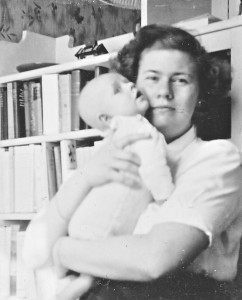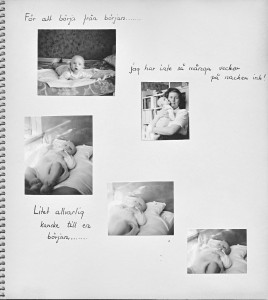These are the first photographs of me, “not more than a few weeks old”. I am somewhat blurred, out of focus. Like my life.
I was a mistake. My mother was a shy young woman, only 23 years old when giving birth for the first and only time, in December 1946.
During the first decade of my life, we lived with her parents in Stockholm. Gradually I realised that I had a father somewhere. At some point I also learned about the family secret — that they were not divorced, but that I was born out of wedlock, and that she had formally married and divorced a friend to acquire a married woman’s surname.
Around the age of 15, being alone at home one day and sneaking around in her belongings, I found a small calendar book from 1946 in the back of a drawer. I remember opening it with some trepidation, feverishly browsing the entries nine months before my birth, and finding a mid-March note: “Party at the Academic Association” — she was a lab technician in training at the University of Lund in southern Sweden, and apparently liked hanging out with the students — and then the next day: “God, what have I done!”.
I still remember the shock, standing there in the drawing room in the afternoon, holding the diary in my hands, feeling a bit guilty for having sneaked in her private papers — and saying loud to myself over and over again: “That’s me, that’s me! What have you done? I’m a mistake!”
I don’t think I ever mentioned my breach of privacy, and I’m sure we never spoke about the entry. It was something I kept to myself, and I have never forgotten the feeling that afternoon of being a mistake. I think that was the moment when I lost my innocence.
I don’t blame her for anything. She was young and lonely, far away from home, probably didn’t know much about prevention. In those days, having a child out of wedlock was a family scandal, so I don’t blame her for keeping the diary entry to herself. (The diary was not among the few belongings left after she died in 2014.)
But it’s hurtful nonetheless, both to think about it and to write about it. Part of the aim of this project is to explore the healing powers of sharing such experiences with others.


